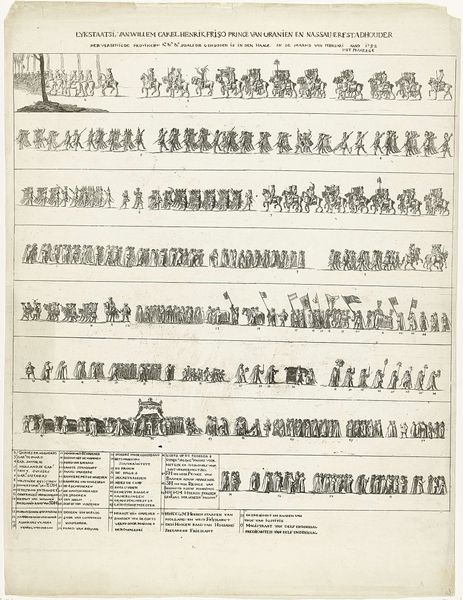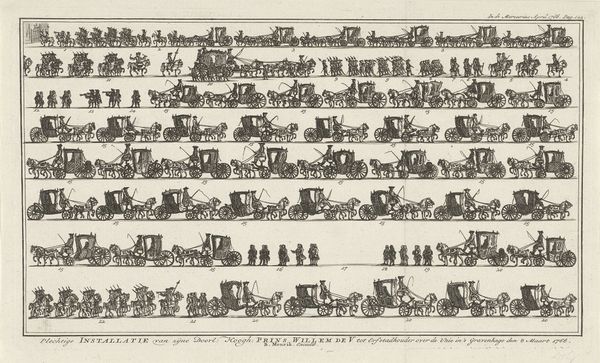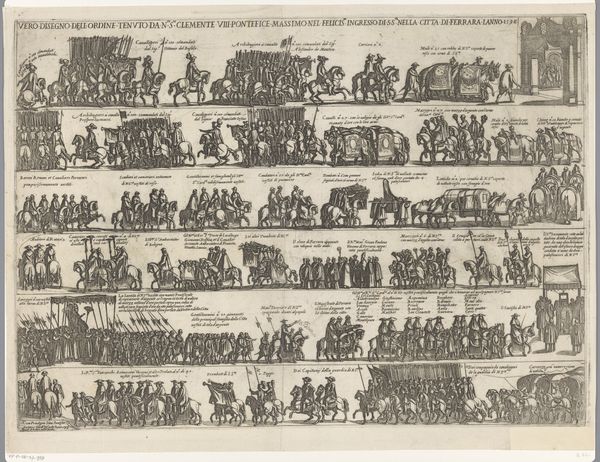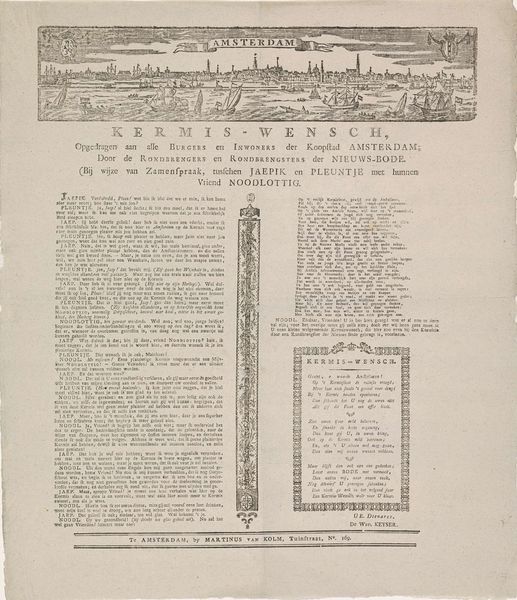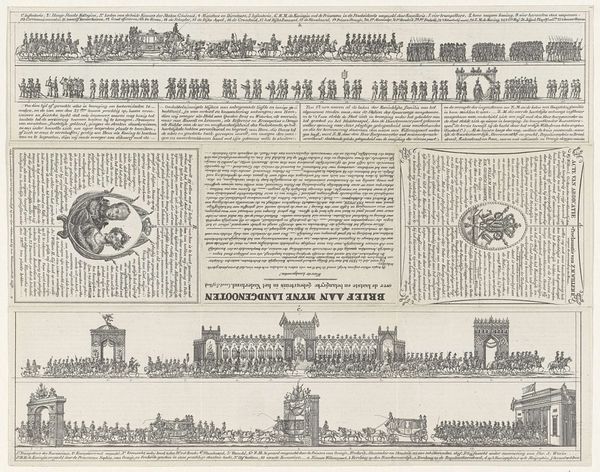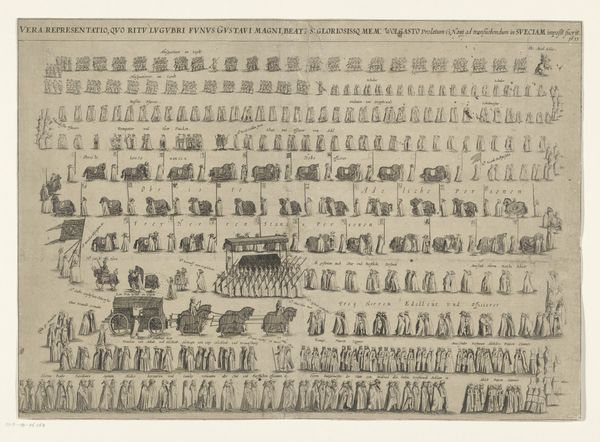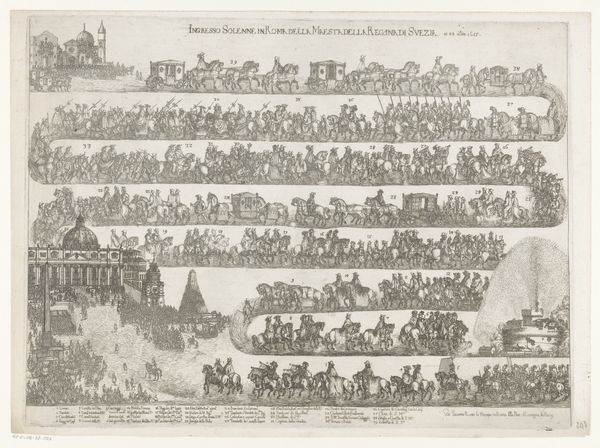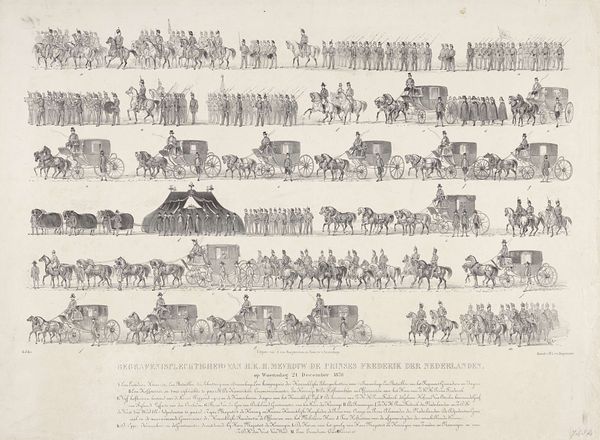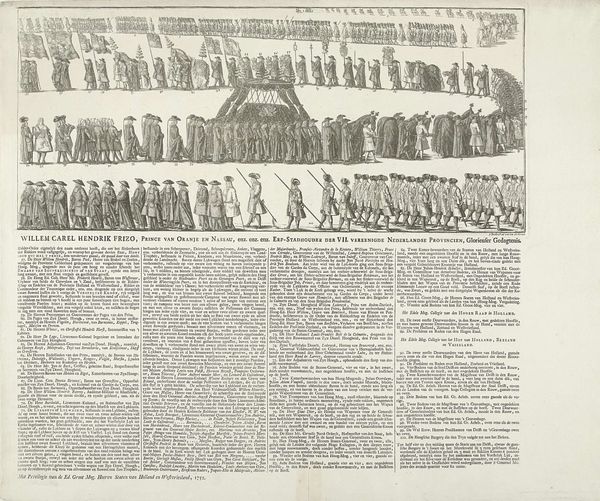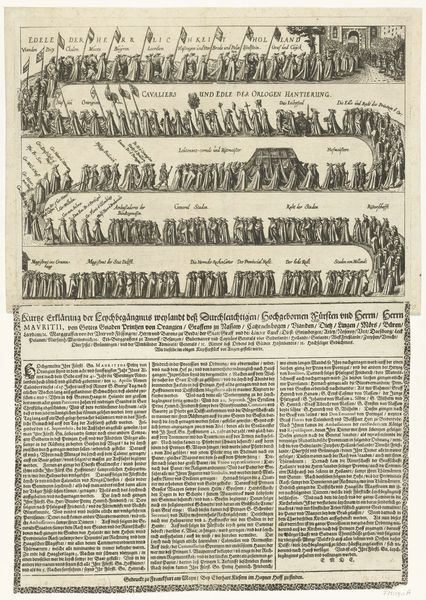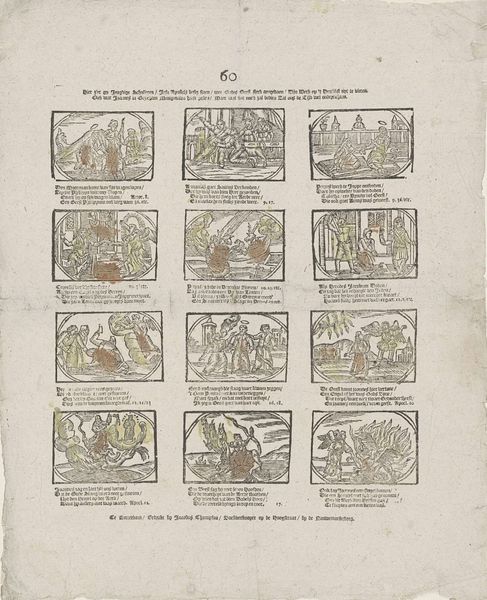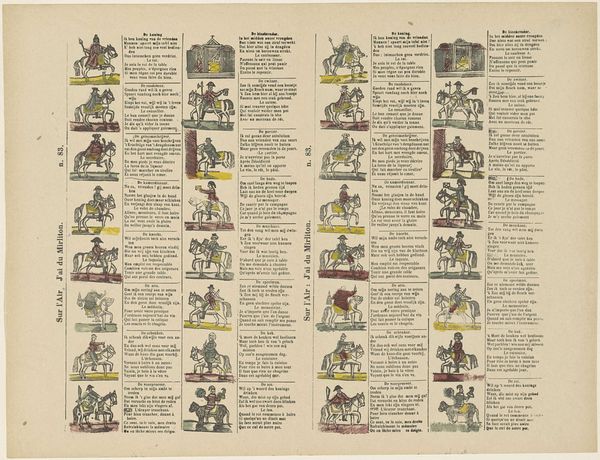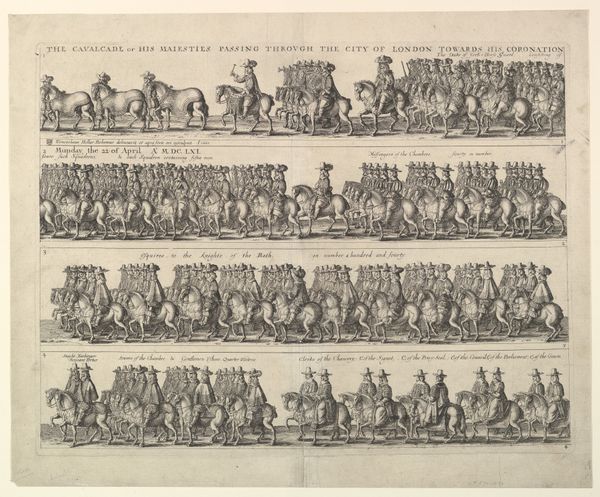
Bruiloftstoet van Karel Christiaan van Nassau-Weilburg met prinses Carolina, 1760 1760
0:00
0:00
print, engraving
#
narrative-art
#
baroque
# print
#
old engraving style
#
cityscape
#
history-painting
#
engraving
Dimensions: height 163 mm, width 392 mm
Copyright: Rijks Museum: Open Domain
Curator: This is an engraving titled "Bruiloftstoet van Karel Christiaan van Nassau-Weilburg met prinses Carolina, 1760," or "Wedding Procession of Charles Christian of Nassau-Weilburg and Princess Carolina, 1760," created in 1760 by an anonymous artist. It's a fascinating historical record housed here at the Rijksmuseum. Editor: It's incredibly detailed! It reminds me of a roadmap or even a spreadsheet of carriages. How can a single print capture such an elaborate, extended scene like that? What should viewers focus on in such a large work? Curator: Indeed, it is information dense, isn't it? I see this work almost as a comic strip panel depicting the same subjects multiple times across the space. Think about how each row of carriages tells a story - the story of wealth, status, and the grand performance of royal marriage. It really begs the question: What did marriage *mean* back then? It was political as much as personal, wasn't it? A visual feast, but also a potent reminder of societal structures at play. What feeling do the rigid rows convey to you? Editor: Thinking about it, there's a strange blend of celebratory joy and something almost... cold. It feels so regimented. Like, there's beauty, but the overwhelming repetition creates this feeling of being observed from on high. Is that maybe, what we could call, "the Baroque aesthetic" playing out in miniature? Curator: That’s an astute observation! You've picked up on something really important. It also goes beyond pure pomp, and into *propaganda*, right? Each precisely rendered carriage served to magnify royal wealth, projecting this air of established power and divine right to onlookers. In a period riddled with rising challenges to absolutist rule, ostentatious displays like these offered an answer and affirmed social hierarchy and control. So what lessons did this leave on display in terms of control of narrative? Editor: Wow, that really gives me a lot to consider about displays of power. Curator: Precisely, that is the wonderful paradox art holds for us: this one image unlocks countless possibilities for new discussion, questions, and thought.
Comments
No comments
Be the first to comment and join the conversation on the ultimate creative platform.
